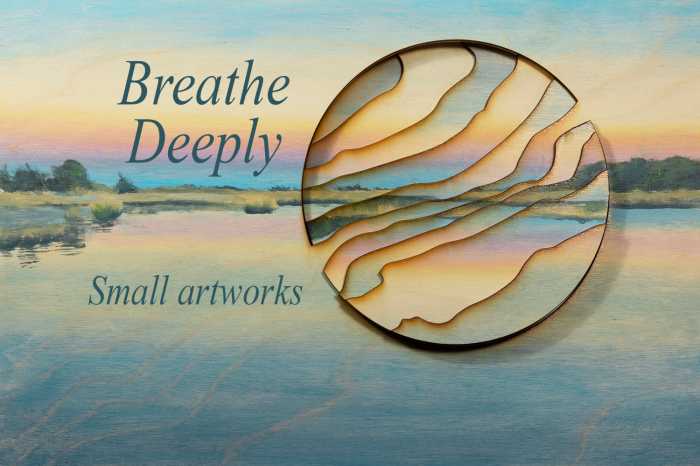Shinnecock Voices: Like a Good Neighbor, Shinnecock Is There!

The United States often treats Native American and Indigenous presence as a footnote in history. As something that happened and faded away. But we are still here and our presence is ongoing. Shinnecock is a community with elders and babies, student athletes and culture keepers, we are veterans and entrepreneurs, artists, civil servants and health workers. Like many indigenous nations, Shinnecock carries the weight of centuries of dispossession; the burden of being made to justify its very existence on its own lands. Yet, we continue to persist and adapt and sacrifice.
Since June 2025, the Town of Southampton has spent over 1.4 million dollars of taxpayer money that continues to grow, taken up valuable space with local news outlets and resources, and perpetuates inaccuracies that are not only socially harmful to the Shinnecock Nation but also accentuate the stereotypes that the United States has tried to consistently depict.
The Town of Southampton’s lawsuit over land rights has escalated beyond local courts, now challenging the federal government’s recognition that the disputed, undeveloped land belongs to the Shinnecock Nation — land the town itself has historically acknowledged as Shinnecock territory.
Knowing even a little of that context changes how we conceive belonging versus possession. It shifts the meaning from a feeling of duty and responsibility to ownership and dictation; from assimilation to relation. It reframes unity from a polite consensus to a principled solidarity, and helps non-indigenous people realize that the most accurate and honest fact is that we are connected — our histories are intertwined and our futures are entangled.
What belonging asks of us is to be neighbors. Belonging is not a singular event. It’s a culture and a lifestyle. It thrives where expectations are clear and consistently practiced.
For Shinnecock and the broader indigenous community, seeing land as a relationship, not real estate is an act of belonging and what it asks of us is to sit with the discomfort of histories that challenge a familiar narrative. To notice where your first reflex is to explain away or to defend, and to practice a different reflex instead: What is my responsibility now that I have this knowledge?
As a Shinnecock woman, the land is my relative, it is my kin. The land is a source of my identity, memory, and sustenance. Stewardship and appreciation are not simply conservation, it is ceremony, law and livelihood. It is a sense of belonging and duty that words can’t describe to its full extent. However, what can be said is that belonging requires non-native neighbors to learn to share this view, at least enough to make decisions that reflect this understanding — the same perceived requirement of assimilation for indigenous people.

Political sovereignty is not a courtesy extended to towns and states. It is inherent. When our neighbors begin to treat sovereignty as a living principle and recognize the Shinnecock Nation. When they began to engage with Shinnecock leaders as equals in regional planning, public health and education, and coordinate economically, then respect becomes practice and practice becomes a lifestyle. When businesses and legislations seek consultation prior to action, rather than acknowledgement and forgiveness after the fact, friction then transforms into partnership. This leads to investments, both economically and emotionally.
Sports, arts, languages, and STEM opportunities are not just extracurricular luxuries; they are the building blocks of a future where Shinnecock children can not only thrive as Shinnecock but simply as humans. Investing in the well-being of our youth not only supports the economic and educational well-being of our young people, but also encourages the progressive pipeline into healthcare, marine sciences, law and education — fields that are necessary to continue to uplift underprivileged communities.
Through proper investments, native communities like the Shinnecock, can tell fuller stories — in public spaces! Museums, schools, libraries, and historical societies, and local media outlets all shape what a community believes about itself.
When the Town of Southampton truly and honestly includes Shinnecock voices in exhibits, lessons and livelihoods, all future generations benefit. Inviting Shinnecock historians, culture keepers, artists, and athletes into classrooms and public forums (and compensating them properly!) can change to infrastructure and that infrastructure creates a bridge between historical communities. This bridge, like all bridges, leads to another side — and is a two-way street called reciprocity.
Reciprocity is not a one-time donation or performative acknowledgement. Recurring support of Shinnecock programs, legislation and businesses; stepping aside when help or advocacy isn’t needed, educating where knowledge lacks and building trust through integration that has the biggest impact. Schools can lead this initiative with land acknowledgements that are more than just a sentence by doing things like adding indigenous history into field trips and community service. By building sustainable relationships with Shinnecock community members and educators, not only do students learn, but neighbors acquire understanding and empathy. Education and acknowledgment spark curiosity and respect that can expand into humility and solidarity.
When artists sell their work, the economy and culture both grow. When non-indigenous neighbors attend events as guests, with humility, they practice a small but meaningful form of solidarity that extends through generations. Local economic development centers Shinnecock and prioritizes tribally owned businesses, industries and sustainable initiatives that can expand opportunities without erasing cultural and historical identity. Municipal support and partnerships can streamline joint ventures and encourage community cooperation and respect. When done correctly, families feel safer, and decision-making improves.
With more well-rounded perspectives, children are able to inherit safe places that emphasize belonging. While disagreements are inevitable, when the conflict is handled well people stay at the table. When solutions are being sought, the truth is told; consent is given where consent is required, harm is repaired, resources are redistributed when inequity is documented, and your neighbors keep showing up. When those principles live within policy and ethos, not just through sentiment, trust accumulates like interest.
Whether you’re local to Shinnecock or other indigenous communities, not everyone who cares can be present. However, the feeling of belonging goes beyond borders. Non-native neighbors, diaspora members and online supporters can strengthen the infrastructure of relationships by bridging the gap of belonging. If you don’t know how to move from aspiration to action, these five (5) principles are a starting point:
Consent isn’t optional. If an initiative speaks on indigenous issues (culture, land or people), ask a local indigenous person. The amount of hearsay, propaganda, and down-right fallacies that have been spread surrounding native people and their history must come to an end, and it comes with humble curiosity (and when someone says no, believe them).
Pay people. If there is anything that colonialism has taught us, it is that nothing comes for free. Indigenous expertise deserves compensation, so plan accordingly. An event is not the time to second-guess another person’s lived experience, nor to make a judgment call for what their time is worth. If you want to be paid accordingly for your time, then so would a native person. Period.

With that being said…
Share the mic. If there is an invitation to speak on a subject or at an event, bring an indigenous partner with you and make space for them and their perspective. If it is a paid event, share the wealth!
Familiarize yourself. Learn who your local native contacts are, learn the history, the correct pronunciation of names, places and important events. Ask questions, and show courtesy.
Be specific. Broad statements and generalizations don’t help anyone; be specific in your statements but also your support. Don’t just say “you support the Shinnecock Nation,” that’s superfluous. Instead host a Shinnecock fundraising event, hire Shinnecock interns or employees, and challenge your peers in educational debates.
By sponsoring an event, buying from native businesses, amplifying accurate information, challenging stereotypes amongst your peers, and compensating native educators, you create space for indigenous people. The future has room for cultural traditions and new perspectives, but it also has space for sovereignty and neighborliness.
If you live on the East End of Long Island, your life is already intertwined with indigenous lives, specifically with Shinnecock. Coming together through tides and traffic, history and modernism, but choice always comes with intention. Learn the names and stories that belong to the place you traverse. Include Shinnecock in your life with respect and a shared sense of fate. Fund practical projects with pride, and show up when asked; but more importantly, ask for forgiveness and when forgiveness is given, repair the damage.
“Shinnecock Voices” is a monthly column in which citizens of the Shinnecock Nation share stories and opinions and discuss the projects and campaigns they’re working on, to allow readers an inside view into their incredible community.










